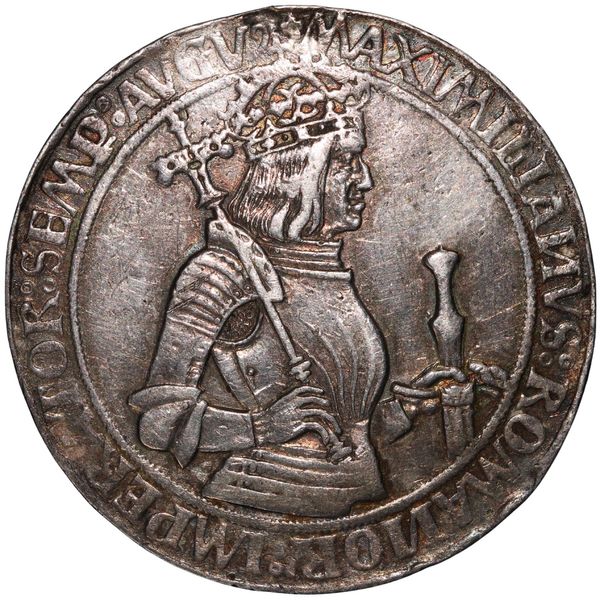Hall, Tyrol, the obverse with a crowned effigy, carrying in his right hand a sceptre and his left the hilt of a sword, the surround inscribed 'MAXIMILIAИVS ROMAИOR IMPERATOR SEMP AVGV' the reverse with the crowned imperial arms of a left-facing double eagle, flanked by the crowned coats of arms of Hungary and Austria, the arms of Burgandy and Habsburg beneath, inscribed 'PLVRIVMQ EVROPE PVINCIAR REX ET PRINCEPS POTN', or "King of most of Europe's countries and mightiest prince", 4.2cm diameter, (c.30g)
| Estimate: | £15,000 - £20,000 |
Note: Maximilian I (1459-1519) succeeded his father, Frederick III, as Holy Roman Emperor in 1493. Celebrated as “the Last Knight,” he was a popular and influential ruler whose achievements included the proclamation of the “Everlasting Peace,” the establishment of the Imperial Judicial Court, and the creation of the Imperial Districts.
In 1490 he acquired Tyrol from his cousin, Archduke Sigismund, who, unable to meet his financial obligations, ceded the territory. This proved highly advantageous, as Tyrol’s rich silver deposits generated revenues far exceeding the taxes Sigismund had struggled to raise. Sigismund had previously introduced the Guldiner and half Guldiner to the region.
Following his imperial coronation in 1508, Maximilian commissioned the Kaiserguldiner, a commemorative coin struck at the Hall mint. Produced not for circulation but as gifts to enhance his prestige, these coins quickly became sought after among the nobility. Maximilian took a personal interest in their design and production, which stand as a remarkable artistic and technical achievement of the Hall mint.
DAV.8005 EGG S.120
8 ; M.1T.70


